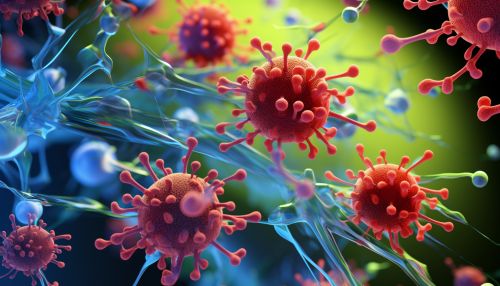Pathogen-Associated Molecular Pattern
Introduction
Pathogen-Associated Molecular Patterns (PAMPs) are molecular structures that are associated with groups of pathogens and are recognized by the innate immune system. These structures are conserved among a class of microbes and can be recognized by pattern recognition receptors (PRRs) in both plants and animals.
Structure and Function
PAMPs are typically found on infectious agents, including viruses, bacteria, fungi, and parasites. They are conserved molecular motifs that are expressed on the surface of these infectious agents and are recognized by the host's immune system. The recognition of PAMPs by the host's immune system triggers an immune response, leading to the elimination of the pathogen.


Recognition by Pattern Recognition Receptors (PRRs)
The recognition of PAMPs is mediated by a group of receptors known as Pattern Recognition Receptors (PRRs). PRRs are primarily expressed on immune cells, such as dendritic cells and macrophages, and recognize PAMPs through a direct interaction. This interaction leads to the activation of the immune cell and the initiation of an immune response.
Types of PAMPs
There are several types of PAMPs, each associated with a different class of pathogens. For example, lipopolysaccharides (LPS) are a type of PAMP found on Gram-negative bacteria, while peptidoglycans and lipoteichoic acids are PAMPs associated with Gram-positive bacteria. Other types of PAMPs include flagellin (found in flagellated bacteria), bacterial DNA, and viral RNA.
Role in Innate Immunity
The recognition of PAMPs plays a crucial role in the activation of the innate immune response. When PRRs on immune cells recognize PAMPs, they trigger a series of intracellular signaling pathways that lead to the production of cytokines and chemokines, proteins that help to coordinate the immune response. This process is essential for the host's defense against infection.
Clinical Significance
Understanding the role of PAMPs in the immune response has important implications for the development of vaccines and therapeutics. For example, PAMPs can be used as adjuvants, substances that enhance the body's immune response to a vaccine. Additionally, drugs that target the interaction between PAMPs and PRRs could potentially be used to modulate the immune response in diseases where the immune system is overactive, such as in autoimmune diseases.
